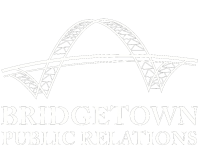
One of the most important aspects of good communication is being able to write clearly, concisely, and accurately. Good writing is essential to your public image, and error-riddled communication will hurt your reputation. So, we will be exploring some of the common writing errors and confusions — we’ll skip “there, their, and they’re.” Public relations also uses the AP style of writing, which has its own particularities. The Associated Press publishes an updated style guide annually, a copy of which every professional communicator has on their desk. We hope you find these helpful if you’re working on a press release for your company, writing your e-newsletter, or company blog. If you can, make sure to have someone proofread your copy before putting it out into the world. Even seasoned writers and editors miss errors in their own writing. A theory for this is that we know what we want to say, and skip over the errors because our brains assume the words on the page are the same as in our heads.
But, like any skill, your writing accuracy improves with practice. The more often you encounter these little intricacies, the easier it gets to avoid errors.
Our first one isn’t so much a common error, but a helpful tip:
What’s the difference between a hyphen, an en dash, and an em dash?
The hyphen (-)
The hyphen is mainly used to clarify the connection between words. For example, you could describe a city’s light-rail system, meaning a light-rail train, as opposed to a light rail system, which could mean it doesn’t have much public transport.
*However, do not use a hyphen with adverbs (ending in -ly): “She was lightly dressed for October.”
Another instance is in compound numbers: Last weekend, a twenty-four-year-old came to the birthday party.”
You can see the difference in comparison with: “Twenty four-year-olds came to the birthday party.”
The first sentence describes one young adult, as opposed to two dozen toddlers. A big difference!
The en dash (–)
The en dash is used to denote relationships, numbers, dates, and ranges.
“The Seattle–Portland flight takes 45–60 minutes.”
“2016–2018 I worked in Seattle for a company with 5–10 employees.”
The em dash (—)
The em dash is generally used to add emphasis or highlight an idea within a sentence. It can be used to replace parentheses, colons, or commas.
“When I worked in Seattle — the company was wonderful — I spent lots of time hanging out with coworkers on the weekend.”
*Most style guides do not recommend a space around the em dash, but the AP style — being a journalistic style — does.
This is not intended to be an exhaustive list of use cases, but it will hopefully help provide a general outline as to when you should use these different dashes in your writing.
Dashes on your Mac and Windows keyboards:
The minus key defaults to a hyphen for both Mac and Windows.
En dash
Mac: Option + Minus –
Windows: Hold Alt + type 0150 –
Em dash
Mac: Option + Shift + Minus
Windows: Hold Alt + type 0151
Happy Writing!
